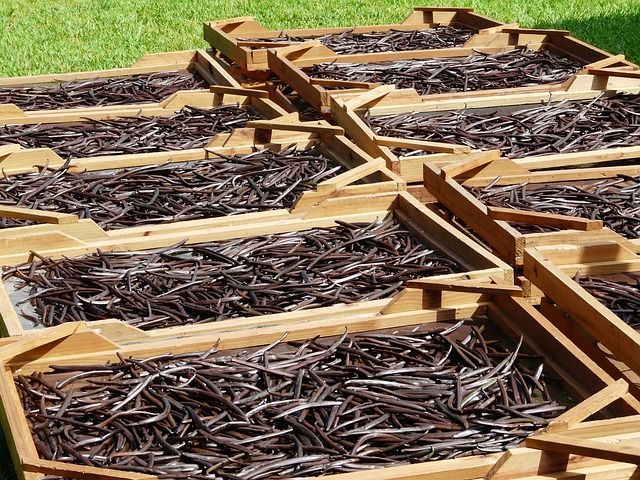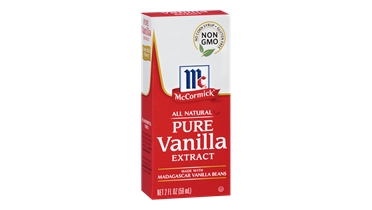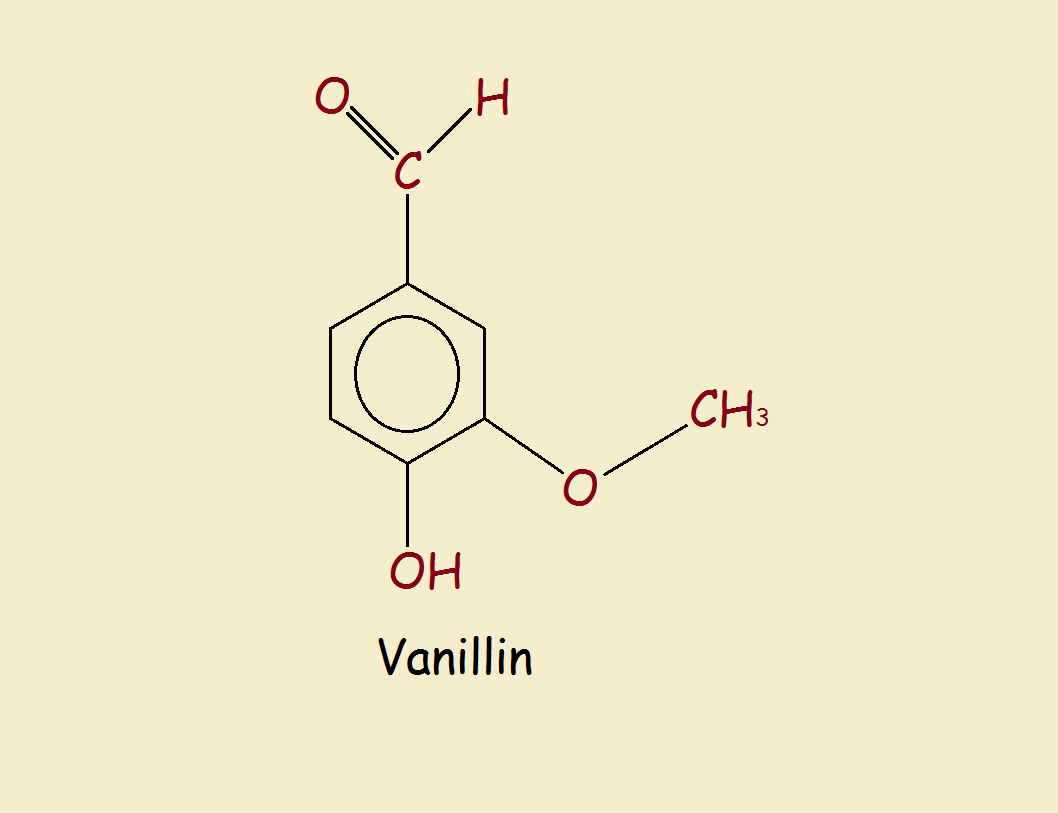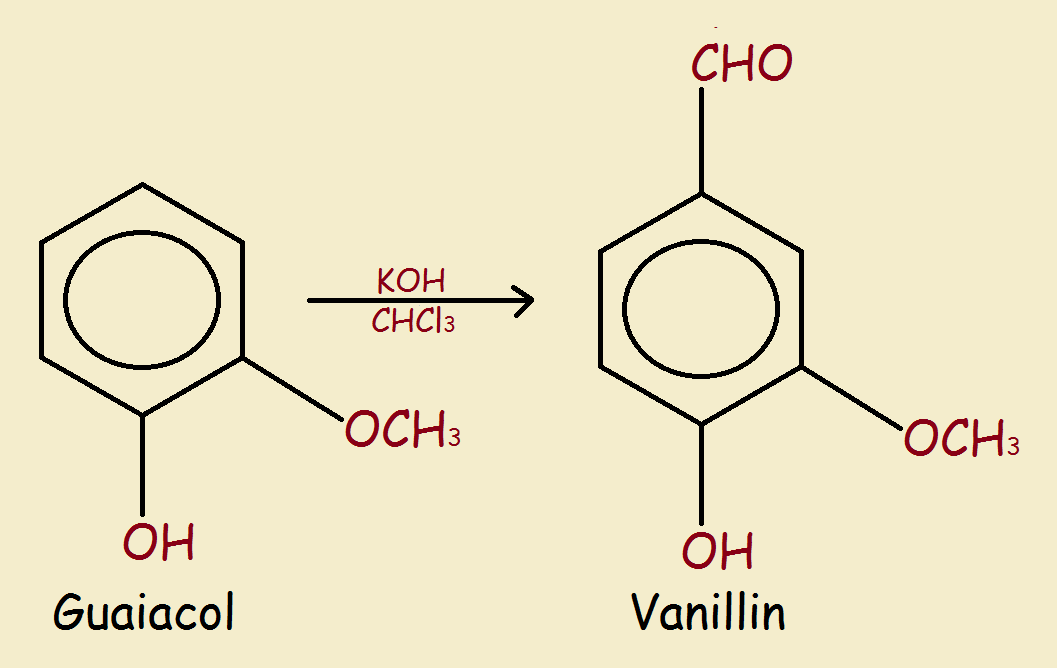
Probably the average grocery shopper is unaware there are two sources of the flavor of vanilla. They are vanilla and vanillin. Are they the same? Are they different? If they are different, what is that difference?
Vanilla and Vanillin
Historically, our favorite ice cream flavor has been vanilla. To draw special attention to the use of natural rather than synthetic ingredients, some have added descriptors to their ice cream. They use phrases like natural vanilla or natural vanilla bean.
The vanilla bean comes from an orchid, and is completely natural. The flavor extract made from it is called vanilla. Yes, the word that ends in an “a,” and not an “n.” We still have vanilla and vanillin. So what is vanillin?

Vanillin
To understand vanillin, it is important to realize that vanilla as a natural product consists of a number of organic compounds not just one. However, its major component is 4-hydroxy-3-methoxybenzaldehyde. The chemical structure of this component is written:
 Vanillin is this same compound, produced synthetically. While not quite as good as the real thing, vanillin makes a fairly decent substitute. In view of the rumor there is going to be a vanilla shortage, it might behoove many to consider purchasing products made with vanillin.
Vanillin is this same compound, produced synthetically. While not quite as good as the real thing, vanillin makes a fairly decent substitute. In view of the rumor there is going to be a vanilla shortage, it might behoove many to consider purchasing products made with vanillin.
What is the Chemistry?
What is the chemistry utilized in the manufacture of synthetic vanillin? There is any number of ways to prepare vanillin. One historically important method was to derive it from guaiacol, utilizing potassium hydroxide and chloroform. The net reaction involves addition of an aldehyde group (-CHO), as shown below.
By Way of Comparison

Although the compound vanillin is identical to the major component found in the vanilla bean, this does not make the two interchangeable in flavor. There are hundreds of compounds in vanilla, just as there are in natural strawberry. Yet, artificial strawberry offers a flavor most would agree is unlike that of natural strawberry.
Note: You might also enjoy Cochineal Red Dye from Bugs
References:
- Rainforest Spices: Learn about Vanilla
- International Journal of Farming and Allied Sciences: Oxidative Production of Vanillin from Industrial Lignin…

I like the vanilla flavour and didn’t know vanillin was a synthetic version of one of its ingredients. I always prefer natural if possible.
Yes, synthetic, though the same primary component *chemically.* Some substances are both synthetic and slightly different chemically. At least the compound mentioned in the article is predominant in both vanilla and vanillin. But the other negative factor concerning vanillin is the lack of other flavor and aroma compounds found in real vanilla. It is not an overwhelming loss as it is in the case of strawberry. Real strawberry is “magnitudes” better than artificial strawberry.
Do you know if I´m allergic to vanilla, then I´m also allergic to vanillin?
First, I am not a medical professional. That disclaimer aside, you might want to know if you are *truly* allergic to vanilla or it is a food sensitivity or some other problem you have with it. Vanilla contains many compounds not found in vanillin. Hence, if the problem is with one of the other compounds and not the main component, you might “get away with” consuming the vanillin. On the other hand, every synthetic compound contains tiny traces of side-reaction products. It is possible to have difficulty with those. How is that? Well, consider the person who purchases a food item not containing peanuts, but that was produced with the same equipment used to make another, peanut-containing product. It might still be possible for the person with a peanut allergy to get sick, even though only tiny traces of peanut are involved. So my answer is threefold. 1. Make sure you actually have an allergy. 2. If you do, it may be possible, nonetheless (possible, maybe not probable) that you will not have a problem with vanillin. 3. It would even be possible to have difficulty with the simple synthetic vanillin and not to have difficulty with the more complex vanilla.
They have found a use for vanillin in treating psoriasis. Who would have thought imitation vanilla might afford a cure for psoriasis?
Very hard to reply to all the V questions! I was a chocolate maker for many years. Until recently I was struck with a chronic disease called EPS (Empty Pocket Syndrome). Cheers
I might suggest a kind of comparison with a rainbow…
If a rainbow is equivalent to vanillin, a double or triple rainbow is equivalent to vanilla.
[…] idea that man made chemicals are inherently harmful. For example, natural vanilla extract contains vanillin and hundreds of other compounds that make up it’s flavor. While imitation vanilla extract […]
[…] or extracted from the vanilla bean plant, creates the characteristic vanilla taste. It’s not exactly vanilla, as the natural extract contains compounds other than just vanillin, but it is a common vanilla […]
I am no longer scared of vanillin!